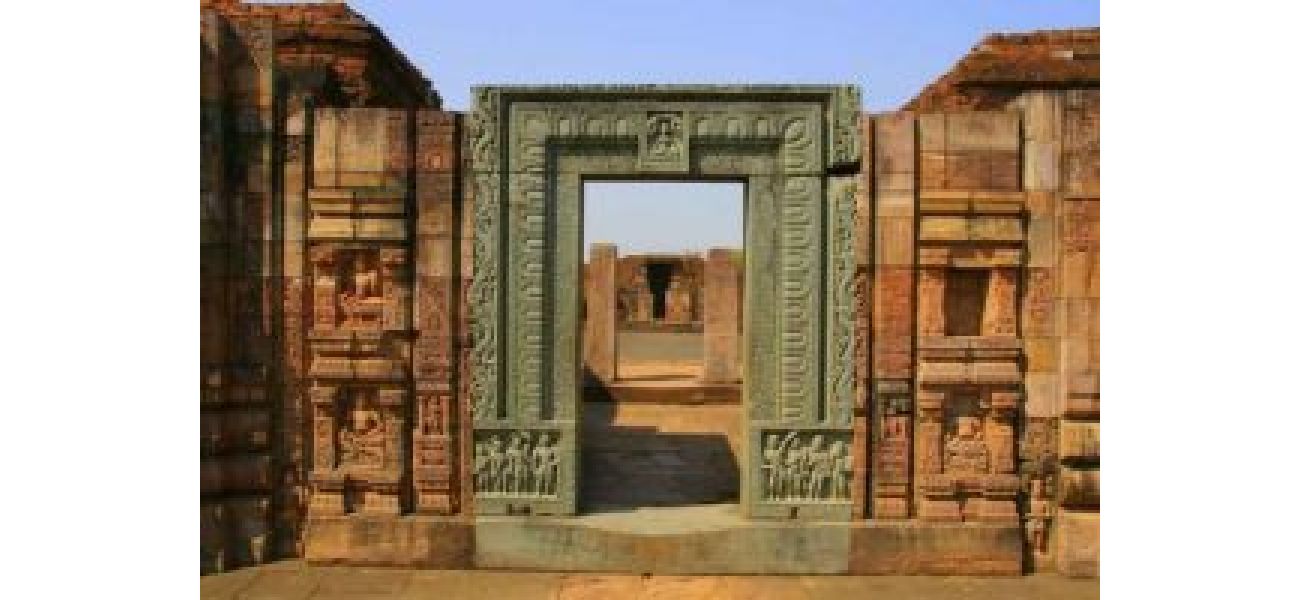Experts discovered perfectly preserved Buddha heads, untouched for over 1,300 years, praising them as a masterpiece.
Archaeologists in Jajpur, Odisha, have uncovered significant artifacts that could change our understanding of the region's Buddhist history and its ties to Southeast Asia.
March 2nd 2025.

In the ancient hills of Ratnagiri, located in the state of Odisha, a team of dedicated archaeologists have been unearthing secrets that have been buried for centuries. These discoveries have shed new light on the region's deep-rooted Buddhist past and its connections to Southeast Asia. The team has recently made some groundbreaking discoveries, including three massive Buddha heads, inscriptions, and votive stupas, which have the potential to redefine our understanding of ancient Kalinga's spiritual legacy.
The latest excavation at Ratnagiri, situated about 80 km from the state capital Bhubaneswar, began on December 5 after a gap of 63 years. According to ASI's Superintending Archaeologist Dibishada Brajasundar Garnayak, the importance of these recovered materials will only be fully understood after a thorough analysis. He expressed his surprise and admiration at the recovery of the three Buddha heads, describing them as "extremely beautiful and perfect works of art on stone", even noting the intricate details such as wrinkles on the neck.
One of the archaeologists involved in the excavation shared that although Buddha heads were discovered at Ratnagiri during the first excavation between 1958 and 1961, they were missing their noses and ears. However, this time, the heads were found in perfect condition, with one of them being the largest ever recovered at the site, standing at 1.5 meters tall. The team also discovered a stone pedestal used to hold the Buddha head, as well as a stone elephant.
During the excavation, the team also stumbled upon another shrine complex and a large number of votive stupas, which are symbolic mounds that honor Lord Buddha. Garnayak believes that the discovery of these stupas suggests that Ratnagiri was a major religious center for Buddhist monks. The team also found some stone-carved palms and fingers of a Buddha statue, a wall, and inscribed relics dating back to the 8th and 9th century CE.
Apart from these significant findings, the excavation also recovered clay pottery, believed to be 1,200-1,300 years old. These items can provide valuable insights into the food habits, spiritual behavior, and social culture of the people who lived during that time. The team also found household articles and terracotta toys, including animals like dogs and elephants, which will further aid in understanding life during that period.
Historian Anil Dhir believes that Ratnagiri, along with Udayagiri and Lalitgiri, forms a part of the "Diamond Triangle", a collection of three Buddhist sites. He adds that Buddhism flourished in Ratnagiri between the 5th and 13th centuries CE and the recent discoveries could provide a deeper understanding of the region's history. Dhir also notes that Ratnagiri was a center for Mahayana and Tantrayana Buddhism and played a crucial role in spreading Buddhism to other parts of the world, particularly Southeast Asia, after the Kalinga War under Emperor Ashoka's rule.
The latest excavation at Ratnagiri, situated about 80 km from the state capital Bhubaneswar, began on December 5 after a gap of 63 years. According to ASI's Superintending Archaeologist Dibishada Brajasundar Garnayak, the importance of these recovered materials will only be fully understood after a thorough analysis. He expressed his surprise and admiration at the recovery of the three Buddha heads, describing them as "extremely beautiful and perfect works of art on stone", even noting the intricate details such as wrinkles on the neck.
One of the archaeologists involved in the excavation shared that although Buddha heads were discovered at Ratnagiri during the first excavation between 1958 and 1961, they were missing their noses and ears. However, this time, the heads were found in perfect condition, with one of them being the largest ever recovered at the site, standing at 1.5 meters tall. The team also discovered a stone pedestal used to hold the Buddha head, as well as a stone elephant.
During the excavation, the team also stumbled upon another shrine complex and a large number of votive stupas, which are symbolic mounds that honor Lord Buddha. Garnayak believes that the discovery of these stupas suggests that Ratnagiri was a major religious center for Buddhist monks. The team also found some stone-carved palms and fingers of a Buddha statue, a wall, and inscribed relics dating back to the 8th and 9th century CE.
Apart from these significant findings, the excavation also recovered clay pottery, believed to be 1,200-1,300 years old. These items can provide valuable insights into the food habits, spiritual behavior, and social culture of the people who lived during that time. The team also found household articles and terracotta toys, including animals like dogs and elephants, which will further aid in understanding life during that period.
Historian Anil Dhir believes that Ratnagiri, along with Udayagiri and Lalitgiri, forms a part of the "Diamond Triangle", a collection of three Buddhist sites. He adds that Buddhism flourished in Ratnagiri between the 5th and 13th centuries CE and the recent discoveries could provide a deeper understanding of the region's history. Dhir also notes that Ratnagiri was a center for Mahayana and Tantrayana Buddhism and played a crucial role in spreading Buddhism to other parts of the world, particularly Southeast Asia, after the Kalinga War under Emperor Ashoka's rule.
[This article has been trending online recently and has been generated with AI. Your feed is customized.]
[Generative AI is experimental.]
0
0
Submit Comment





